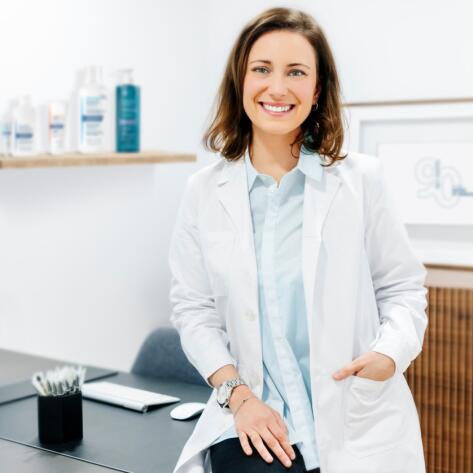-
Your concerns
Our articles to help you gain a better understanding
-
Our solutions
-
Ducray Dermatological laboratories
Acne isn't just a skin disease, it's a disease of the pilosebaceous follicle, a structure that includes the hair and the sebaceous gland. The sebaceous gland is responsible for the production of sebum, a mixture of lipids, which is essential for protecting the skin from external aggressions and ensuring its suppleness. Acne is affected by two main factors, hormones and bacteria:
Other common causes of acne include family history, comedogenic cosmetic products, certain medications and stress.
Acne results in oily and shiny skin, dilated pores, and the appearance of spots, ranging from blackheads to whiteheads and red spots.
Acne mainly affects the face, but can also occur on the forehead, back, back of the neck, and front of the chest. The primary risk of this condition is the appearance of scars, which can persist long after adolescence. The various symptoms of acne make the disease particularly noticeable and the look on others' faces is sometimes difficult to cope with, especially when people stare at spots assuming they are contagious or associated with a lack of hygiene. This is simply not true!
Depending on the significance of the various foregoing factors, acne can take several forms:

Do you have imperfections, blackheads and shiny skin?
Take your diagnostic test and discover the right care routine for your skin.
It is important to consult a general practitioner or a dermatologist (i.e. a skin specialist), if you have acne. As acne is a chronic disease, the various treatments available are usually envisaged over several months or years. A medicinal treatment may be prescribed to improve the skin's condition and limit the worsening of acne. Depending on the type of acne, its severity and other criteria (duration, age, etc.), a local, oral or combined treatment will be indicated. Other options such as laser treatments may be recommended by your dermatologist.
Some treatments may sometimes weaken the skin, leading to dryness, redness, discomfort, etc. These side-effects can be counterbalanced by appropriate hydrating dermo-cosmetic skin care products. Anti-acne dermo-cosmetic treatments can be prescribed by your doctor and recommended by your pharmacist. They include creams, masks, lotions, corrective sticks, and so on.
To get rid of your acne and limit the risk of scarring, you must be patient, comply with your prescription and follow the advice of your health care professionals.
What should you do if you develop acne? It's important to adopt the right habits from the very first spot flare-ups: